Automate and Optimize Your Processes
Maximize Efficiency and Minimize Effort
Discover How Automation Can Transform Your Business
Operating Cost Reduction
Streamline Repetitive Tasks Through Automation and Minimize Manual Intervention, Leading to Significant Cost Savings.
Reduced Human Errors
Minimize errors and ensure consistency in your operations with precise automated processes. Achieve greater reliability and efficiency through automation.

Enhanced Efficiency and Productivity
Liberate your team from routine tasks, allowing them to focus on strategic initiatives that drive growth. Achieve heightened efficiency and productivity by automating repetitive processes.
Enhanced Decision-Making
Access real-time data to make more informed and strategic decisions that benefit your business. Utilize timely insights for improved decision-making efficiency and effectiveness.
Power Automate
It’s a powerful Microsoft tool designed to simplify and automate business processes. With Power Automate, you can connect applications and services, automating repetitive tasks and allowing your team to focus on what truly matters. Whether you’re looking to enhance operational efficiency, reduce manual errors, or integrate applications, Power Automate provides the solution.

Do you know which analytics you need?
Descriptive Analysis
Summary
What happened?
Function
It uses data mining and data aggregation to discover historical data
Pros
It’s easy to employ in daily opertations. Little experience is needed
Cons
It offers a limited view, and doesn’t beyond the data’s surface
Diagnostic Analysis
Summary
Why did this happen?
Function
It examines causes of trends to help companies better understand variationsin performance and customer behavior
Pros
It enables bussiness to make more-informed decisions about how to solve problems and drive continued success
Cons
It focuses on historical data; it can only help understand why events happened in the past
Predictive Analysis
Summary
What’s going to happen?
Function
It looks at historical data and analyzes past data trends to predict what could happen
Pros
It’s a valuable forecasting tool
Cons
It needs lots of historical data to work. It will never be 100% accurate
Prescriptive Analysis
Summary
What should happend?
Function
It takes the conclusions gleaned froms descriptive and predictive análisis and recommends the best future course of action
Pros
It offers critical insights into the best, most informed decisions
Cons
It requires a lot of past data and often cannot account for all posible variables


